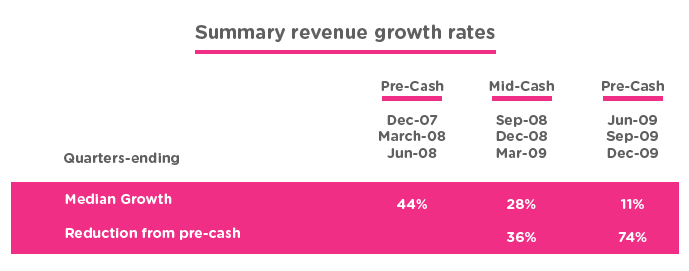Ireland, and the rest of the world, are facing a likely and major economic recession as a result of the coronavirus pandemic. As SaaS recruiters, we are aware that leaders are struggling with how to make tough decisions — resizing teams, how to rebuild 2020 budgets, and how to shift on customer acquisition, revenue growth, sales efficiency, and cash flow.
The circumstances and causes of this recession are obviously different from those that caused any past downturn and so much is still unknown, but there are still lessons that can be learned by taking a look at some insights around the last big financial crisis of 2008/2009.
One of those lessons relates to the government’s fiscal response. One of the biggest differences between 2020 and 2008/2009 is that the Irish Government can borrow money at a very low cost. The availability of this low-cost credit gives the government greater room for maneuver and should help Ireland avoid a repeat of many of the austerity measures implemented in response to the economic downturn a little more than a decade ago.
The Irish government is doing well regarding the actions taken so far in the crisis, acting rapidly and decisively to ensure supports are in place for workers and firms in the immediate term. More needs to be done and innovative things must be delivered to help businesses.
The Nasdaq index fell by nearly 50% during the 2008 downturn. It took about 170 days for the market to hit bottom. So far in 2020, in the fastest and steepest declines in history, the Nasdaq has fallen about 30% in less than 30 days. However, many experts have argued that COVID19 is an ‘accelerant’ rather than the sole core reason behind the crash.
According to a SalesForce Benchmark, here are two important metrics that SaaS companies were impacted in 2008:
Revenue Growth
Worldwide most companies experienced significant reductions in revenue growth rates during the 2008 crisis.

Sales efficiency, which is calculated by taking current quarter new revenue annualized, divided by prior quarter sales & marketing expenses, is a leading SaaS health indicator, and it also can show when investments in sales and marketing are too low.
It is predicted that sales efficiency will decrease in this period. In 2008 sales efficiency fell from 68% pre-crash to 30% post-crash, resulting in a 56% deterioration in efficiency. However, for several companies, a rebound in efficiency started to be seen 6–8 quarters after the trough (as sales efficiency improved from 28% during the crash to 30%).

Most companies saw significant declines in cash flow and profitability as well as sales efficiency deterioration, lower revenue growth, and people costs.
The next three or four quarters will be tough. The good news is that every company analysed in this benchmark survived the 2008 crisis and went on to become an even bigger company. Recovery rates were quick and quicker than other industries picking up growth by Q4 2009.
Businesses must stay flexible, adjusting their strategies and tactics, and yet being able to respond quickly to the upturn when it comes. Having a pipeline of innovation ready to roll out on short notice is a great example of how to be prepared for the return to the “new normal”.
Even during a recession, innovation has an important place. Consumers will be ready to try a variety of new products & services once the economy scenario improves. Companies should not wait until the economy is fully recovered to ramp up.

